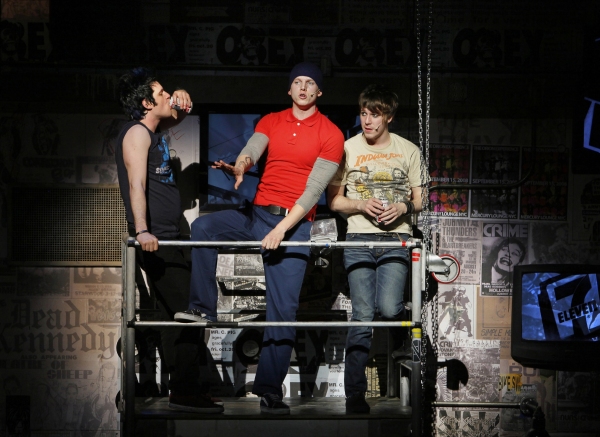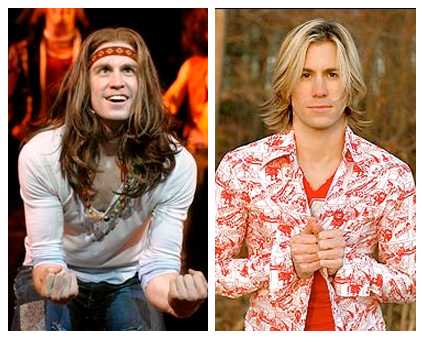Years ago, I saw Barbara Cook’s show Mostly Sondheim. I was in college, and I sat at the very back of the long-as-a-cornfield orchestra section at Boston Symphony Hall, surrounded by a sea of handsome, aging gay couples. I couldn’t convince any of my friends to come. I couldn’t even really describe to them who Barbara Cook was. Because if you’re my age, even if you like theater, the associations are a little tenuous. (She was a Broadway star? Of sorts? A long time ago?) Let’s be real: The collective memory of my musical-loving generation stops squarely at Betty Buckley.
Yes, a lot of us would do well to read up. Or just read ATC for a couple of afternoons, which is, of course, how I know about Barbara Cook in the first place. But as the posters as ATC would say: Sondheim on Sondheim, which opened at Studio 54 on April 22, is not really for me. I am not its target demographic.
Sondheim on Sondheim‘s demographic is your grandmother or possibly even your great-grandmother. That’s how stodgy things get during this utterly polite, khaki-wearing, dull-as-dirt show that asks you—I swear to God—to applaud at television screens for two hours.
Don’t get me wrong. What happens on those television screens is the best part of the show. You will be moved to applaud, even, when composer Stephen Sondheim talks about his life and his work. But then a bunch of real live people onstage sing his work. Of course, that’s irrelevant, because Sondheim talking about his work, even on a television screen, is much more engaging and interesting than say, Vanessa Williams—one hip jutting out to the side for the duration of the thing like a mannequin at Macy’s—singing his work.
Newsflash: You could have stayed home and watched Stephen Sondheim talk about his life and work on a television screen. You probably could have seen it on PBS, so you wouldn’t even have needed cable. You could have applauded to your heart’s content, wept, eaten popcorn, stretched out on the couch, worn your yoga pants. It would have been a great way to spend an evening. In one truly ludicrous moment, we are treated—get ready—to a montage of YouTube videos that people have posted paying tribute to Sondheim.
Hey, everyone over the age of 70. The YouTube is free. Ask one of your grandchildren, and they can show you how to use it so you never, ever have to pay $126.50 again to see it. They can even make a little Sondheim playlist for you. In short, did I really leave my house for this? And do I need to report Sondheim on Sondheim to the feds for scamming the elderly?
Of course, you really do need to leave your house to hear Barbara Cook sing Sondheim songs live, and that’s worth your money. She is a master interpreter, a class act, and every bit as golden-voiced as everyone says she is. But the show fails her in a lot of ways. It tries to set her up as an awkward romantic foil to Tom Wopat (Say it with me: Ew.), but more, it expects her to do all the heavy lifting and cred-building. That’s why they threw her “Send in the Clowns.”
Did you really expect them to let Vanessa sing it? There’s already one fabulous-looking B-list actress butchering the thing on Broadway. We didn’t need another one. So they gave it to Barbara. And her interpretation is poignant, but nothing special, which is why the applause at the end—thundering and show-stop-y, as though the audience is relieved to be clapping for a real person—feels so cheap.
It’s not about the song, or the way that it’s sung. It’s not about the moment at hand at all. It’s about Barbara Cook, the Underrated Musical Theatre Star and everyone’s half-century-long annoyance that she’s not more famous, and about That Judy Collins Song That Everyone Knows.
Gross, dude.
Call me crazy, but I like my theater to be about… what I’m seeing in front of me. About right now. The biggest bummer of all this? Stephen Sondheim’s music has aged so beautifully. Company and Sweeney Todd and A Little Night Music still feel so relevant and important today. That’s why these shows are revived every twelve seconds, why everyone’s heart still breaks when they hear “Being Alive” or “Not a Day Goes By.” That’s why 4,000 Sondheim birthday tributes feel so justified. Go ahead and name a theater after the man, why don’t you! Knock yourself out. But please, for the love of God, don’t treat his music like a museum piece—a thing that only his contemporaries could understand. He is diminished in that light, and by Sondheim on Sondheim, where he is relegated to the boxy confines of a television screen—a two-dimensional image—the best anyone could do.




